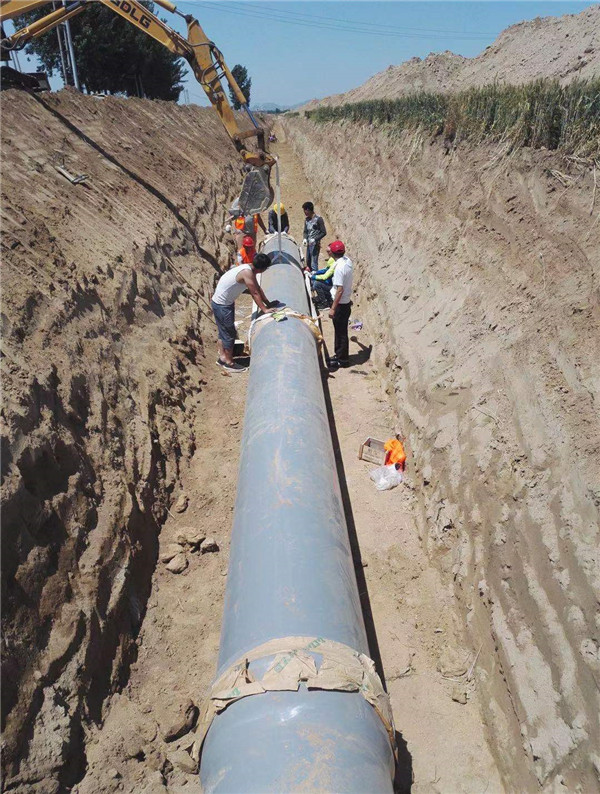Nov . 20, 2024 01:01 Back to list
ppr hot water pipe
Understanding PPR Hot Water Pipes A Comprehensive Guide
In the realm of modern plumbing, the choice of materials significantly influences the efficiency, longevity, and safety of water distribution systems. Among various options available, Polypropylene Random Copolymer (PPR) pipes have gained widespread popularity for hot water applications. This article delves into the intricacies of PPR hot water pipes, highlighting their benefits, installation practices, and maintenance considerations.
What are PPR Pipes?
PPR pipes are made from a thermoplastic polymer known as polypropylene. This material is known for its chemical resistance, durability, and ability to withstand high temperatures, making it an ideal choice for hot water distribution. PPR pipes are typically green or white and are available in various diameters to accommodate different plumbing needs.
Advantages of PPR Hot Water Pipes
1. Thermal Resistance PPR pipes can handle temperatures up to 95°C (203°F) without deforming or losing integrity. This high thermal resistance makes them suitable for both hot and cold water applications, ensuring that they perform well in diverse conditions.
2. Corrosion Resistance Unlike metal pipes, PPR does not corrode over time, even in the presence of minerals and chemicals in water. This property extends the lifespan of the piping system and reduces the risk of leaks and failures.
3. Lightweight and Easy to Install PPR pipes are significantly lighter than traditional metal pipes, easing transportation and installation. They can be joined using various methods, including socket fusion, which creates a seamless and strong connection.
4. Low Thermal Conductivity PPR pipes exhibit lower thermal conductivity than metals, which means they can maintain water temperature efficiently, reducing energy consumption. This quality is particularly beneficial for hot water systems as it minimizes heat loss.
5. Cost-Effectiveness Although the initial investment in PPR piping may be slightly higher than traditional materials, the long-term savings in maintenance, energy efficiency, and replacement significantly outweigh the initial costs.
Installation of PPR Hot Water Pipes
The installation process of PPR hot water pipes is relatively straightforward, but certain best practices should be followed
ppr hot water pipe

1. Proper Sizing Ensure that the diameter of the pipes is adequate for the intended hot water flow rate. Consulting with a plumbing professional can help determine the correct sizes needed for efficiency.
2. Cutting and Joining Pipes should be cut using specialized tools to ensure clean edges. For joining, a socket fusion method is often employed. This involves heating the ends of the pipes and fittings until they melt, then pressing them together to form a solid bond.
3. Support and Spacing PPR pipes should be properly supported to prevent sagging. Adequate spacing between supports helps accommodate thermal expansion, which is crucial for preventing stress on the joints.
4. Testing After installation, it is essential to conduct a pressure test to ensure there are no leaks. This step is vital for confirming the integrity of the system before it is put into operation.
Maintenance Considerations
One of the significant advantages of PPR hot water pipes is their low maintenance requirements. However, ongoing inspection is recommended to ensure the system operates efficiently
1. Regular Inspections Periodically check the exposed portions of the piping for signs of damage, such as cracks or leaks. Early detection can prevent larger issues in the future.
2. Cleaning While PPR pipes resist scale buildup, it's advisable to flush the system periodically to remove any sediments that may accumulate over time.
3. Temperature Monitoring Keeping an eye on the water temperature can prevent overheating, which may affect the integrity of the pipes in the long run.
Conclusion
PPR hot water pipes represent a modern solution for efficient and reliable plumbing systems. Their numerous advantages—thermal resistance, corrosion resistance, lightweight nature, and cost-effectiveness—make them a preferred choice for both residential and commercial applications. With proper installation and maintenance, PPR pipes can provide decades of trouble-free service, contributing to sustainable and efficient water management systems. As the demand for high-quality plumbing materials continues to rise, PPR pipes will undoubtedly play a significant role in the future of hot water distribution.
-
Durable PP Rigid Sheet: Lightweight, Chemical Resistant Solutions
NewsAug.21,2025
-
PVC Grey Sheet for Extraction: Chemical Resistant & Durable
NewsAug.19,2025
-
Durable PVC Pipe Fittings for Plumbing & Irrigation Needs
NewsAug.18,2025
-
HDPE Steel Belt Reinforced Spiral Corrugated Pipe | High Strength
NewsAug.17,2025
-
HDPE Pipe Fittings: Durable, Leak-Proof Solutions
NewsAug.16,2025
-
Premium CPVC Sheet: High-Temp & Chemical Resistant Solutions
NewsAug.15,2025

